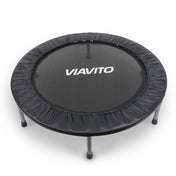When it comes to weightlifting often the focus is on the namesake – lifting the heaviest weights or smashing out reps to build and strengthen. But when it comes to your ability to hit those numbers and exceed your one-rep maxes it’s mobility that has all the control. Your mobility essentially dictates the depth of your squat, your pushing power in your bench press and how smooth your deadlift feels. Aspects that become all the more important when you’re adding load or reps.
Mobility improves the ability of your body to move through different ranges of motion. And, just like you can train for strength, you can also add in some movements to help improve your mobility. So, in this article, we’re going to give you the dos and don’ts of mobility training and how to use it strategically to get the gains you're after.
DO understand how mobility can help your weightlifting
As we’ve said before, mobility has a big role to play in terms of the range of movement you have. Having a full range of motion is essential in weightlifting, as it ensures that all of the supporting muscles that help to push heavy loads are recruited correctly.
Let’s take the military press for example. This, of course, focuses on the shoulder. But your shoulders are supported by your upper and lower back, your rotator cuff joint and you need to recruit a range of muscles around the shoulder. Being able to move through the full movement ensures you’re using these supporting muscles to drive the weight overhead. Engaging your back, core, shoulder blade and smaller shoulder muscles in a full range of motion.
So, what aspects can it help you really improve on in weightlifting?
- Form: when you can perform a movement in the full range you have the option to adapt your form to increase gains and move in sync with your body.
- Flexibility: keeping you limber and able to move in different planes of movement.
- Injury prevention: looking after your muscles and ensuring they’re moving functionally.
- Recovery: mobility exercises are often introduced to recover from an injury. However, they’re also great post weights to increase recovery and reduce doms.
- Muscle recruitment: activating the right muscles to support healthy and pain-free lifting.
DON’T just do one type of mobility training
Now when it comes to mobility training, there are a few routes you can go down. Foam rolling, isolated exercises, functional movements stretching, yoga and cross-training. Weightlifting moves you through a limited set of ranges of motion. All of the mobility techniques aim to introduce novel planes of movement; forcing the body to adapt.
So, the key is not just to foam roll or just do one yoga session a week. Think about integrating mobility into your routine - switching up one of your weights sessions for swimming or cycling for example, including functional or isolated movements into your workouts or scheduling a yoga session with a friend. Mobility is all about fostering balance and encouraging the body to move functionally, rather than hyper-functionally in the limited movements weightlifting offers. This way it will work to complement your lifting, progressively improving your lifts and technique.
Do mobility training before, after and intra-workout
Think of mobility as the best friend to lifting. Include mobility movements into your warm-ups: specifically focusing on areas you’re looking to work on that day. Using equipment such as power loops and bands can be really useful to add some light resistance to some of these movements. Here are some examples of key areas that athletes focus on dependent on the compound exercises they’ve got planned that day.
- Squatting? Hip, knee, ankle and lower back mobility
- Deadlifting? Hip, back and hamstring mobility
- Hip Thrusts? Hip, lower back and hamstring mobility
- Bench Press? Shoulder, chest, wrist and back mobility
- Overhead Presses? Shoulder, back and wrist mobility
- Other leg movements? Ankles, knees, hips, hamstrings, and lower back mobility
- Other upper body movements? Shoulder, back, and wrists mobility
Foam rolling and static stretching are best advised after your workout. Allowing your body to recover and reducing stiffness. However, if you’re feeling particularly stiff on the day of tackling a heavy compound workout, feel free to foam roll beforehand, giving you the best chance to execute movements with full range of motion.
Between workouts is the best time to introduce some complementary training. Whether that be swimming, pilates, spin cycling or even a gentle jog or walk. You’re looking to include movements that sit outside of those that you’re used to doing in the weights section.
We hope this article has given you some understanding of what mobility is, how it can help improve your lifts and how to integrate it into your weightlifting routine. For more info on weightlifting, check out our features. Or if you’re looking for some weightlifting kit, take a look at our store.

